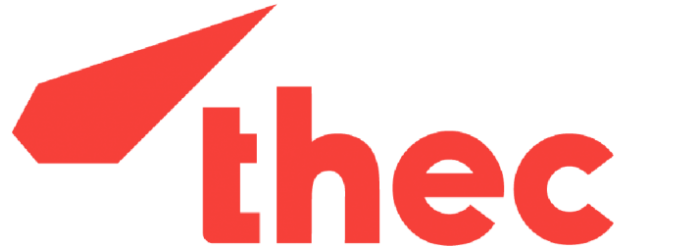Offshore Transport & Installation
Design and analysis of marine operations for offshore installation and construction activities requires sound and careful engineering work aiming at save operation execution minimizing risks to people, environment and equipment. Understanding of marine environments and floating structures is essential; computer models need to adequately represent the reality. thec has broad knowledge of up-to-date engineering and simulation methodology. When required and reasonable, we use sophisticated computer models for analyzing all kinds of floating systems in (harsh) marine environments. Combined with in-house software and customized tools this ensure your project is executed fast and efficient.
thec has both the knowledge and the tools to assess responses of all kinds of floating structure to marine environments comprising wave, current and wind effects. Amongst others, we will assist in downtime analyses and determination of limiting environmental conditions. Based on analysis results, thec also prepares transport and installation procedures and drawings.

Float-Over Installations
Medium to large topsides are often built as integrated decks and installed either by means of heavy-lift crane vessels (HLCVs) or by floating them over the substructure. As HLCVs are limited in both their lifting capacity (at a required outreach) as well as in their availability, float-over installations are a cost-effective alternative.
Existing technology allows for float-over topsides installations of weights exceeding 20000 t. Installations are also possible in open waters. However, the limiting environmental conditions often yield smaller installation weather windows. Thus, engineering has to be conducted with attention to detail to maximize operability while maintaining operational safety.
thec has the know-how of conducting these analyses.
Mooring
Dynamic mooring analyses are conducted for dimensioning of components such as umbilicals, mooring chains, mooring wires, hawsers, anchors as well as winches or bollards. For existing mooring equipment configurations, thec can determine the maximum possible seastate the equipment can handle.
We analyze your vessel and mooring system integrity for design storm conditions considering nearby structures, subsea obstacles and connected cables and umbilicals as well as any other limit imposed during planned operations.
thec conducts dynamic mooring analyses using industry acknowledged software, e.g. MOSES.
Lifting and Lowering
Objects being lifted trough the splash zone require dynamic simulations to determine maximum loads acting on the structure, its rigging and the crane. Besides single hook lifts, thec also offers analyses of complex lifts involving multiple hooks, tugger lines or even multiple crane vessels. Motion characteristics of crane vessels are correctly modeled.
thec conducts offshore lifting analyses using industry acknowledged software such as MOSES.

Cable and Pipe Lay
Cable bending, tension and compression loads are important with respect to the integrity of an offshore power cable. The higher the seastate, the higher loads are experienced by the cable. Wave and current effects need to be considered adequately. Application of modern engineering methods including a proper model of the vessel and its mooring system ensures maximum workability and thus reduces risk of downtimes.
We also conduct analyses of cable pull-in operations for offshore substations and WTG foundations.
For cable analyses, thec uses industry acknowledged software such as MOSES or OrcaFlex.

Floating Wind Turbines
Bottom fixed offshore wind turbines requires relatively shallow water to be economically effective. However, coastline with this shallow waters are limited. Thus, the offshore wind industry advances into deeper waters where further wind resources are found. In locations where the water depth is larger, the use of floating wind turbines can be utilized for wind energy production. Realization, however, requires cost-effective floating wind turbine designs.
Challanges
Remote locations and harsh environmental conditions such as strong winds and extreme seastates are to be taken into account properly. A floating offshore wind turbine design needs to consider large pitch angles due to the thrust of the wind turbine. Motion and acceleration amplitudes as well as mooring line loads and floater excursions need to be kept within acceptable limits, floating stability criteria must be fulfilled and the power export cable needs to cope with floater motions, wave and current loads.
Our services
thec can assist in developing your design. We have experience in optimizing floater geometries for better seakeeping behavior and reduced mooring line loads in extreme seas. Also, we can assist in setting-up your fully coupled analysis models (e.g. with GH Bladed or FAST) and assessing the integrity of the power export cable.


Motion Analysis
Motion analyses are performed using 3D diffraction/radiation theory. Wave induced motions and loads on all kinds of floating offshore structures can be computed. Linear responses are calculated in the frequency domain. Depending on the actual vessel geometry and/or in extreme seas, nonlinear effects may become important. In that case, analyses can be done in the time domain. Motion and acceleration amplitudes at your points of interest as can be determined. In multi-body simulations (e.g. large cargo pieces or multiple floating bodies), connecting loads are determined.
Besides classical transport analyses thec also offers transport fatigue assessments.
Transport Fatigue
Fatigue can be the governing limit state for marine structures. Transport fatigue becomes particularly important when the towing distance from fabrication yard to installation location is long. Consequently, barge motions during the transport may contributes significantly to the overall fatigue damage. Thus, the corresponding damage should be considered in the fatigue design.

